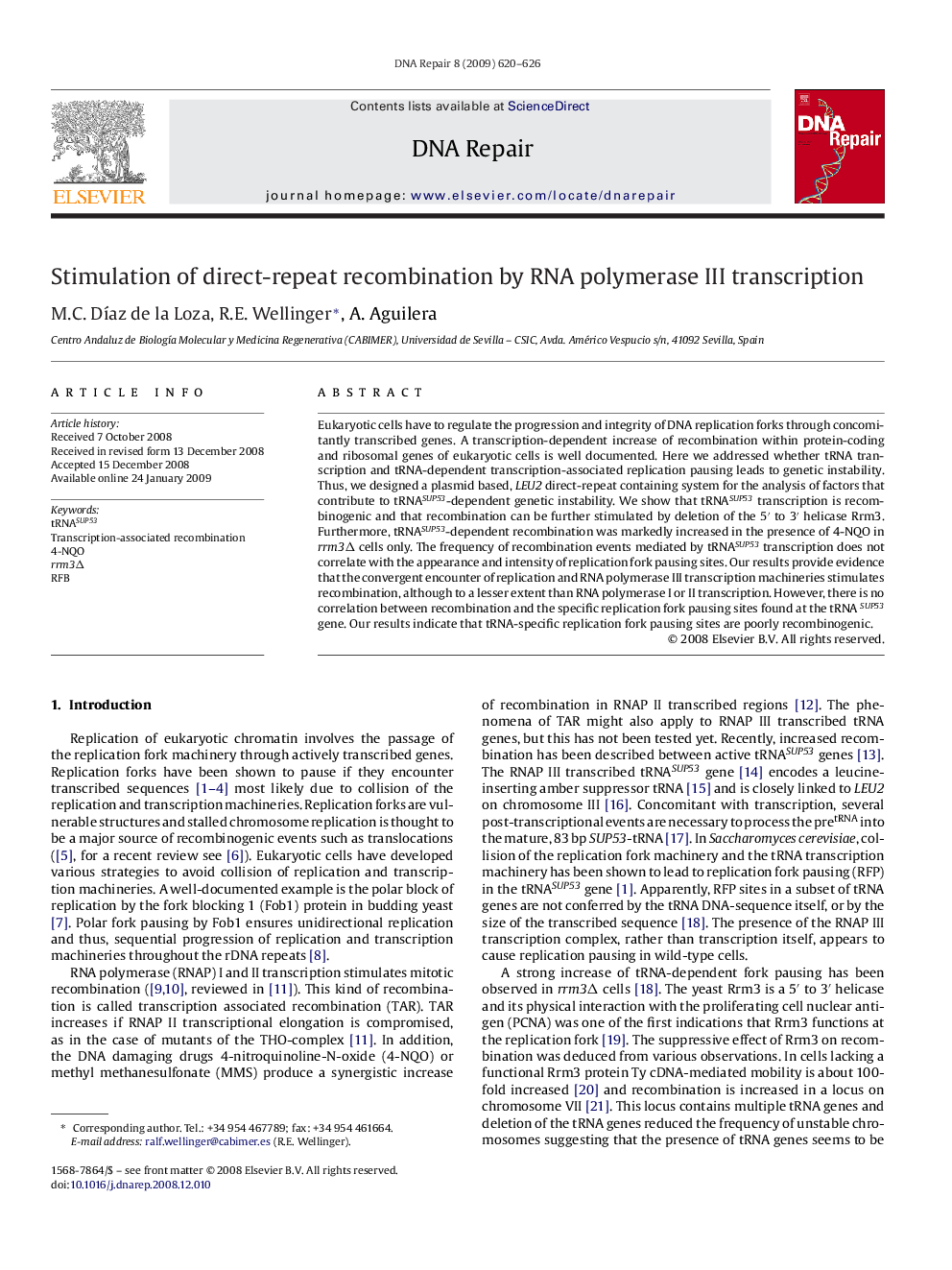| Article ID | Journal | Published Year | Pages | File Type |
|---|---|---|---|---|
| 1981274 | DNA Repair | 2009 | 7 Pages |
Eukaryotic cells have to regulate the progression and integrity of DNA replication forks through concomitantly transcribed genes. A transcription-dependent increase of recombination within protein-coding and ribosomal genes of eukaryotic cells is well documented. Here we addressed whether tRNA transcription and tRNA-dependent transcription-associated replication pausing leads to genetic instability. Thus, we designed a plasmid based, LEU2 direct-repeat containing system for the analysis of factors that contribute to tRNASUP53-dependent genetic instability. We show that tRNASUP53 transcription is recombinogenic and that recombination can be further stimulated by deletion of the 5′ to 3′ helicase Rrm3. Furthermore, tRNASUP53-dependent recombination was markedly increased in the presence of 4-NQO in rrm3Δ cells only. The frequency of recombination events mediated by tRNASUP53 transcription does not correlate with the appearance and intensity of replication fork pausing sites. Our results provide evidence that the convergent encounter of replication and RNA polymerase III transcription machineries stimulates recombination, although to a lesser extent than RNA polymerase I or II transcription. However, there is no correlation between recombination and the specific replication fork pausing sites found at the tRNA SUP53 gene. Our results indicate that tRNA-specific replication fork pausing sites are poorly recombinogenic.
